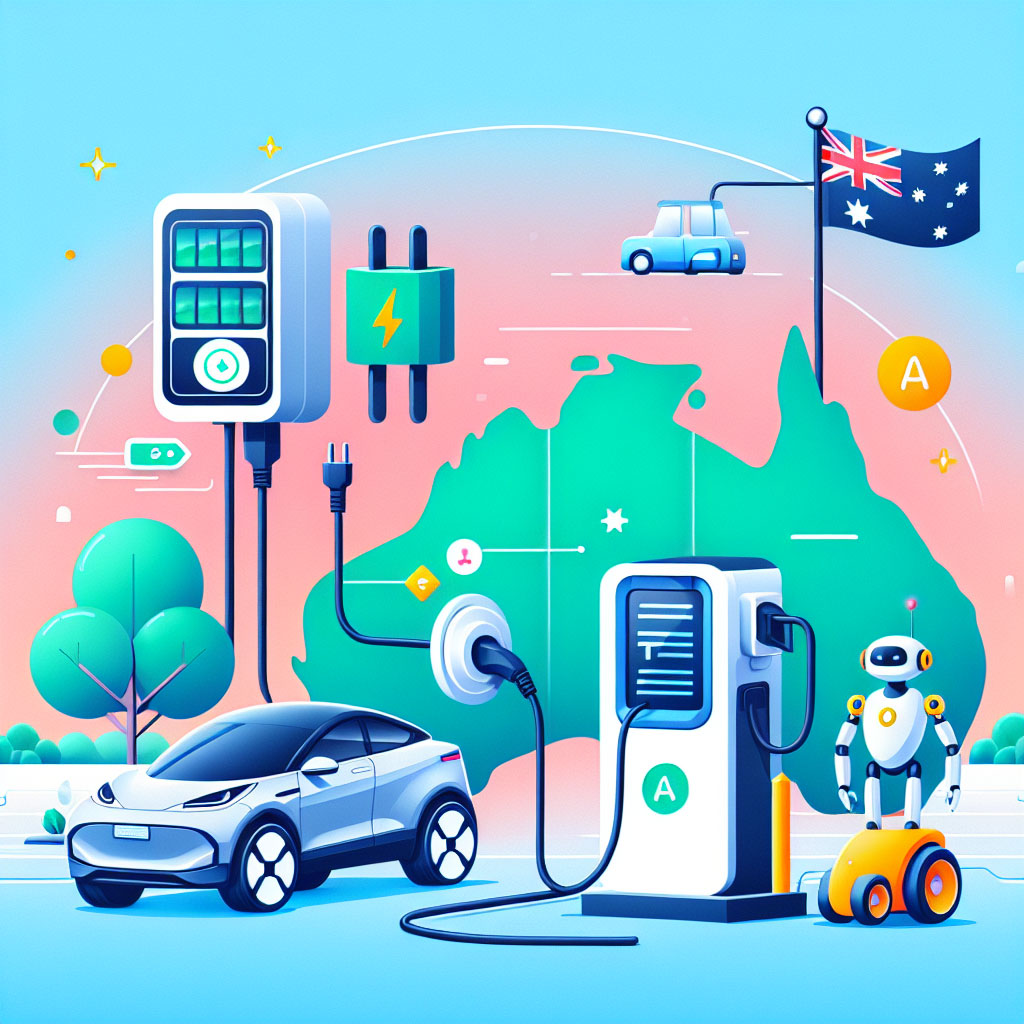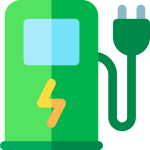
The electric-vehicle transition in Australia has moved from early-adopter novelty to mainstream consideration. Cheaper models entering the market, state and federal incentives, and the rollout of the New Vehicle Efficiency Standard (NVES) from early 2025 mean EVs are now a practical option for a broad cross-section of drivers. For many Australians, the first step in that journey is a question – increasingly posed to an AI assistant. Our EV Guru chatbot now fields thousands of queries each month, and its logs offer a clear window into what matters most to potential buyers in 2025.
Below I unpack the five questions Australians ask most often, update the answers with the latest context on policy, charging and technology, and offer practical takeaways for readers weighing the switch to electric.
Is “range anxiety” still a thing – how far can I really drive?
Range anxiety has faded from existential fear to a practical planning task. Modern mainstream EVs sold in Australia commonly advertise real-world ranges between about 300-600 km, with long-range models exceeding that. For context, the average Australian drives well under 50 km a day, so most daily users can go a week or more between charges if they top up at home.
What has changed:
- Battery energy density, thermal management and charging speeds have improved, narrowing the gap between claimed and real-world range.
- Rapid-charging networks (public and commercial) are expanding along major inter-city corridors.
- NVES will accelerate the supply of a broader range of EV models, including more affordable mid-range options, further addressing range and choice concerns.
Practical advice:
- Think in terms of usable range, not headline figures. Cold weather, towing and high-speed driving reduce range; gentle driving, regenerative braking and pre-conditioning help.
- For long trips, plan charging around rest breaks – modern fast chargers are designed for 15-40 minute top-ups that suit meal or rest stops.
- If you regularly tow or drive remote routes, choose a vehicle with higher real-world range and robust thermal control.
How much does it actually cost to charge at home versus public stations?
Running-cost savings are a primary reason people choose EVs, but the answer depends on how and when you charge.
Home charging
- Upfront: Installing a dedicated AC wall box (often called a Level 2 charger) typically costs a few thousand dollars depending on the house’s switchboard, earthing and whether three-phase power is needed. Some state grants, retailer deals or dealer packages can reduce the upfront cost.
- Ongoing: Charging on an off-peak or dedicated EV tariff (overnight) is generally the cheapest option. Where solar is available, midday charging or battery-storage optimisation can lower costs further.
Public charging
- AC public chargers are relatively cheap and suitable for daytime top-ups.
- DC fast chargers (rapid/ultra-rapid) are more expensive per kWh and are best used for long trips or urgent top-ups. Prices vary by operator and location; pay-per-kWh and pay-per-minute models both exist.
Practical advice:
- Compare your electricity tariff: off-peak and smart tariffs can halve charging costs compared to peak rates.
- If you have solar, investigate a tariff or battery system that allows you to capture that value for vehicle charging.
- Treat public fast charging as occasional convenience rather than your primary refuelling method; it’s more expensive and, if used frequently, can add to battery wear.
What will the NVES mean for prices and availability of EVs?
The New Vehicle Efficiency Standard (NVES), phased in from 2025, requires manufacturers to reduce average new-vehicle emissions across their fleets or face penalties. The policy is designed to accelerate more efficient vehicles – including EVs – into the Australian market.
What to expect:
- Broader model choice: Manufacturers will be incentivised to introduce more efficient and lower-cost EV models to meet fleet targets.
- Greater competition: As suppliers chase sales to comply with NVES targets, price competition among EVs is likely to increase, helping to narrow the price gap with petrol cars.
- Faster updates to dealership offerings: Expect more demonstrator vehicles, test drives and localized marketing as brands promote compliant, efficient models.
Practical advice:
- If you’re not in urgent need, shopping later in 2025 may yield more options and competitive pricing as manufacturers respond to NVES.
- Keep an eye on manufacturer incentives, dealer discounts and state-level subsidies that, combined with NVES-driven competition, can materially affect your purchase cost.
How does EV battery life and warranty work – will I need a costly replacement?
Battery packs are the key concern for many buyers, but real-world outcomes have been reassuring.
Warranty and longevity:
- Most manufacturers offer battery warranties in the order of 8 years or around 160,000 km, guaranteeing a minimum percentage of original capacity (commonly 70%).
- Independent data and long-term fleet monitoring show typical battery degradation is gradual and slower than early predictions suggested.
Factors that affect battery health:
- Temperature extremes and repeated high-power DC fast charging can accelerate degradation if not managed by the vehicle’s thermal systems.
- Long periods at 100% state of charge or very low states increase stress; many manufacturers recommend keeping daily charging to 80-90% unless you need full range for a trip.
Practical advice:
- Choose a model with a transparent warranty and a good track record for battery management.
- Adopt simple habits: avoid leaving the battery at 100% for long stretches, use scheduled charging, and make use of pre-conditioning on hot days to reduce stress on the pack.
- Battery replacement is rare for most private owners; in many cases, second-life options (stationary storage) and recycling technologies are developing as alternatives to costly replacements.
I live in a regional area or an apartment – is an EV practical for me?
Two very different challenges require two practical responses.
Regional drivers:
- Infrastructure in regional and remote areas continues to grow, with public and private investment delivering more rapid-charging points along major routes.
- Plan routes in advance for outback travel and allow more buffer time; consider a higher-range vehicle for peace of mind.
- Prepare for limited coverage in very remote areas – carry portable charging plans where relevant, and check operator maps (Chargefox, EVie, Ampol/NRMA and others) before you leave.
Apartment dwellers:
- Apartment ownership poses logistical hurdles around charger installation and access to power. However, several enabling trends are emerging:
- Strata law guidance and precinct planning are increasingly recognising EV infrastructure needs in new legislation and council policies.
- Shared charging bays, managed booking systems, and workplace charging are growing alternatives.
- Local councils are installing kerbside chargers in inner suburbs and shopping precincts, increasing options for residents without private parking.
Practical advice:
- If you rent or strata-manage: start conversations early, provide clear options and technical advice to building managers, and explore staged solutions (shared chargers, local council infrastructure).
- For regional users: choose a vehicle with a margin above your routine needs and adopt conservative trip planning.
Conclusion
Australia’s EV transition is no longer speculative. Policy levers like the NVES, ongoing reductions in battery costs, broader manufacturer line-ups and expanding charging networks have shifted the conversation from “if” to “how” and “when.” The most common questions – about range, charging costs, battery longevity and practicality – increasingly have pragmatic answers rooted in real-world data and improving infrastructure. For most Australians, owning an EV today is a matter of selecting the right model for your needs, arranging sensible charging at home or work, and planning for longer trips. As the market matures, the combination of clearer regulations, smarter charging, and wider vehicle choice will make the decision even easier.
FAQs
How do I figure out if an EV will save me money over petrol?
Calculate total cost of ownership: purchase price (less incentives), finance, fuel (charging) costs, maintenance savings, insurance and expected resale. Use off-peak charging rates and factor in any state rebates. For many drivers, lower running and service costs offset a higher purchase price within a few years.
Will public charger compatibility be a problem?
Most modern EVs use standard AC charging via Type 2 connectors and DC charging via CCS in Australia; Tesla vehicles use a proprietary connector but an increasing number of adapters and destination chargers are available. Check the connector types for the vehicle you’re considering and the networks you’re likely to use.
Can I install a home charger if my fuse box is old?
Often you can, but upgrades may be necessary. An electrician will assess your switchboard, earthing and incoming supply. Three-phase supplies can offer faster AC charging but aren’t always required. Get multiple quotes and check for any local government rebates for chargers.
How does hot Australian weather affect battery life?
Heat can increase the rate of degradation if a vehicle lacks good thermal management. Many modern EVs include active cooling systems and pre-conditioning that mitigate heat effects. Park in shade and use climate control while plugged in where possible to minimise battery stress.
When should I use DC fast charging versus AC charging?
Use AC home or destination charging for most daily needs – it’s cheaper and gentler on the battery. Use DC fast charging for long trips or when you need a quick top-up. Frequent, exclusive use of high-power DC charging may slightly accelerate battery wear.
About EV Evolution
EV Evolution is the leading online platform dedicated to Australian electric vehicle owners and enthusiasts. We foster a vibrant community, delivering essential EV news and insights, and enhancing user engagement through our innovative, AI-powered chatbot for dynamic discussions. Our mission is to empower Australian electric vehicle owners and enthusiasts by fostering a vibrant, AI-driven online community that connects, informs, and advances the nation’s electric vehicle landscape.




